Falling into old traps
How I am letting a standard of perfectionism allow the fear of doing art creep back in
I’ve been quiet recently on Substack. It has been partly down to third-trimester pregnancy exhaustion, but it is also because I have realised that I am falling into old traps when it comes to my art practice. I can feel the fear of doing art seep in, the more I sit at my kitchen table with my sketchbook open, poised to draw.
What is causing this fear, you ask? I think after watching a video from Sketchbook Skool that I have figured it out partly anyway - I fear that my art isn’t meeting a standard my brain is saying it needs to be, and that actually, that standard I really shouldn’t be trying to achieve.
Some people might want to respond to me with ‘All artists hate their artwork Emily, don’t worry about it!’ and yeah, I get that sentiment, but I want to love the artwork I am making. I can’t rely on other people liking it, so I might as well love it for everyone. Otherwise, why produce art?!
That response most likely would cause the imaginary people in my head to respond with ‘Well Emily, we all go through this, you need to learn to not compare yourself to others…. You just need to be more playful with your work, etc, embrace the mistakes’. I agree with the points around comparison and playfulness. I do want to be more playful with my artwork, express myself more and yet every time I try to draw, my artwork comes out super stiff and just bleh… I don’t even know how to describe it. So, where am I going wrong?
I’ve gone back to basics…. I’ve started another sketchbook out of the millions I have… I have bought some new funky medium to try…. why isn’t my art just I don’t know arting!
I realised while watching the video a couple of things that I fall foul of, and it’s influenced by how I once saw the art world, and I need to break free from it. When I was at school doing GCSE art, I loved the Fauvists and the Impressionists and yet I always felt slightly pushed to draw more realistically rather than stylistically. Even though these two movements did not draw/ paint things realistically, whether in terms of shape or colour.
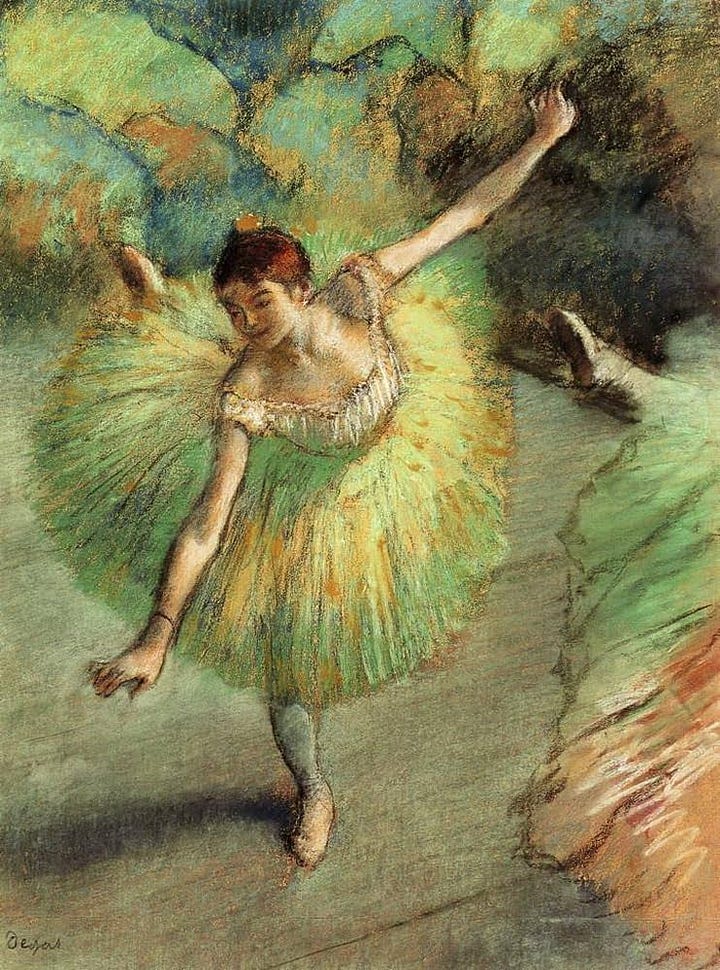
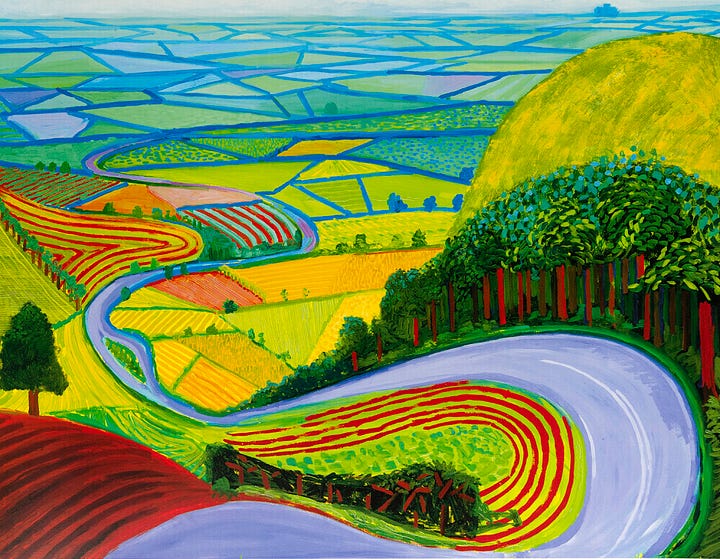
I have a slight obsession with David Hockney and Edgar Degas
Then, in the 2010s while at uni, I used to draw realistic coloured pencil drawings. It was all the rage back then, and I was quite good at it. Again, though….. it was a focus on making a perfume bottle look actually like a perfume bottle.
It means that now, when it comes to my children’s illustration, my brain is still silently focusing on making things need to look realistic enough. My character might be a Jelly that talks with arms and legs, but it still has to look relatively realistic. The emotion is sucked out of the piece because I am too focused that my Jelly still has to look like jelly.
There is something to be said about character consistency, but when I look at the illustrators I love, they have some form of consistency while also embracing wonky shapes, lines, colours, etc. They focus solely on the emotion of the piece rather than making it look realistic, causing their images to sing.

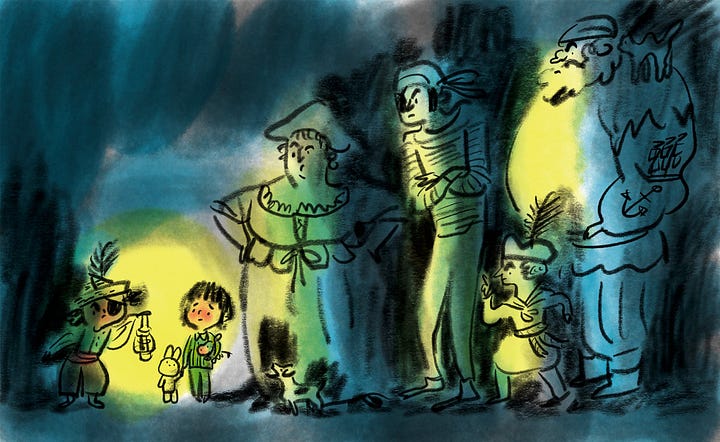
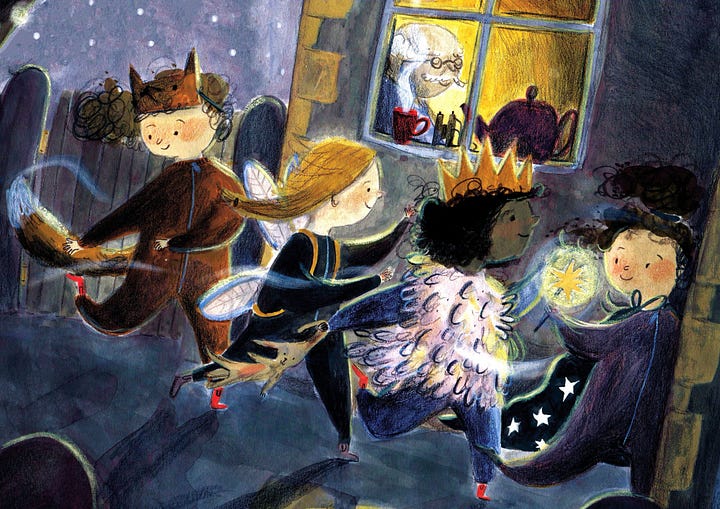
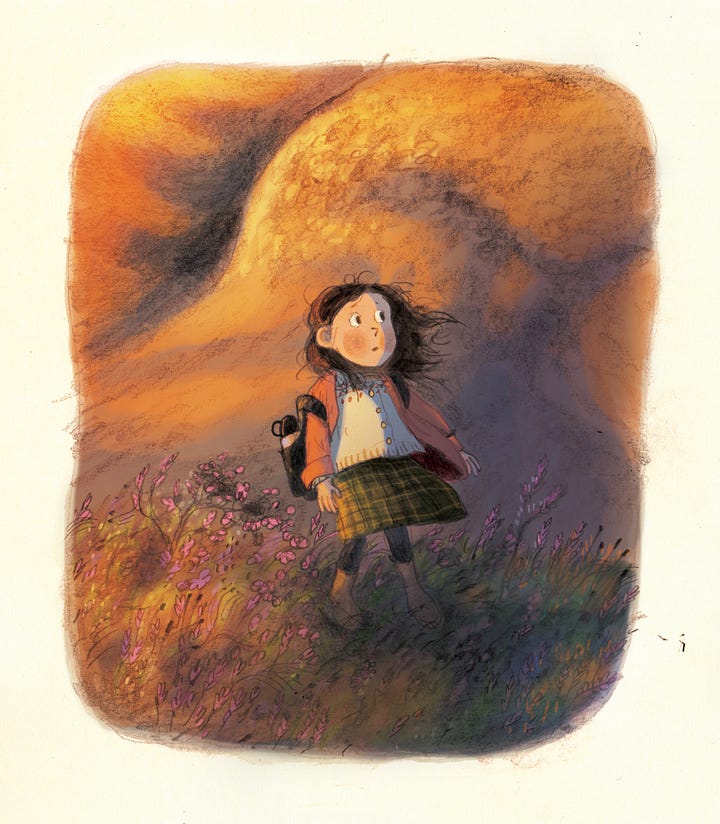
Some illustrators I am loving at the moment. Top-Left: Mark Hoffmann, Top-Right: Helen Stephens, Bottom-Left: Lucy Salmon, Bottom- Right: Briony May Smith
I need to embrace the wonky lines and change my standard in my brain that my art needs to let go of the shackles of realism, and instead, the standard is how relatively stylised or unreal I can make it without losing the essence of what I am trying to capture. I need to focus on the emotion or the colour of the piece, or the exaggerated shapes. I shouldn’t be saying to myself, ‘Does this figure look realistic enough?’ and then beating myself up when they have a massive body and tiny tiny hands.
So I have what I think is the answer.. but how am I going to solve it? Well, I am going to start a new sketchbook but only because I have finished my last one before you all panic!
However, this time I am going to focus on trying to make my lines wonky, do blind contour drawings, and not stop or rub out a sketch when I have gotten the perspective or shape slightly wrong and see what those mistakes might bring. Focus on the emotion instead and see if the picture makes me feel what I want to show, whether sadness, fear or laughter. If I can’t feel the emotion, then I cannot expect someone else to feel it. Hopefully, with some of these mistakes, I will embrace the look of it, and it will recalibrate my brain a little to not wanting everything to meet this realistic standard when I actually don’t want things to look realistic.
Here is the video from Sketchbook Skool in case anyone else is having the same issues as me, hopefully it helps you as much as it is helping me!
If you haven’t done so already and want to hear more about my art journey then please consider subscribing. It is completely free to do so!
Until Next Time!
Em x



